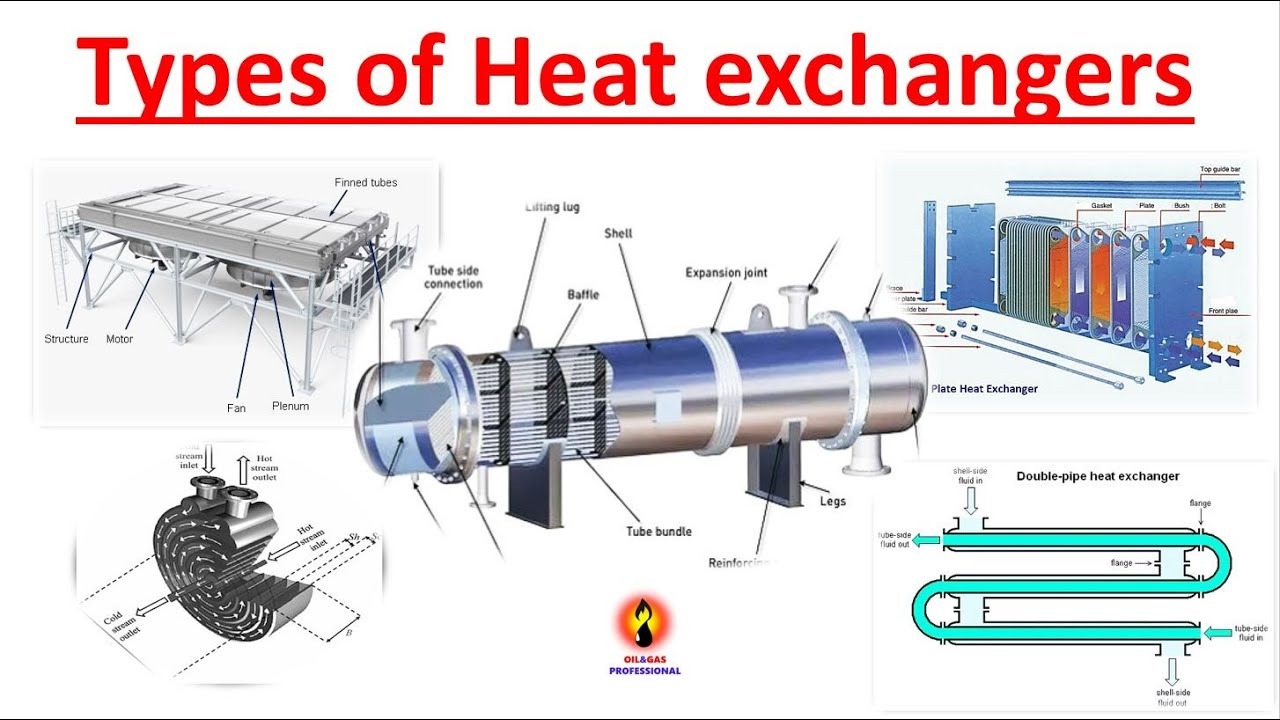The Heat Exchanger : A Guide to Different Types and Their Uses
 Anand Rode
Anand Rode
In the fascinating world of chemical engineering, heat exchangers are the ultimate facilitators of thermal exchange. These ingenious devices act like bridges, transferring heat between two fluids in a controlled and efficient manner. But with a diverse range of heat exchanger designs available, choosing the right one for the job can be a challenge.
Fear not, intrepid explorer of thermal transfer! This blog will delve into the most common types of heat exchangers and their applications:
1. Shell and Tube Heat Exchangers: The Versatile Workhorse
Imagine a nest of tubes carrying one fluid, housed within a cylindrical shell containing another fluid. That's the essence of a shell and tube heat exchanger. They're the quintessential jack-of-all-trades, capable of handling a wide range of pressures, temperatures, and fluid viscosities.
Uses:
Chemical Processing: Shell and tubes are omnipresent in chemical plants, facilitating heat transfer in reactors, distillation columns, and various separation processes.
Petroleum Refining: From preheating crude oil to cooling refined products, shell and tube exchangers play a vital role in refineries.
Power Generation: They're crucial components in power plants, transferring heat from boilers to turbines or removing heat from steam to prevent overheating.
2. Plate Heat Exchangers: The Compact Powerhouse
Think of a series of thin, corrugated metal plates stacked together. These plates, with channels for the hot and cold fluids, create a large surface area for efficient heat transfer in a compact design. Plate heat exchangers are popular for their high efficiency and ease of cleaning.
Uses:
HVAC Systems: Their compact size and efficient heat transfer make them ideal for heating and cooling buildings.
Food and Beverage Processing: Plate heat exchangers excel in applications requiring frequent cleaning and sterilization, such as pasteurizing milk or cooling juices.
District Heating: These exchangers are used in transferring heat from a central source to individual buildings for efficient heating systems.
3. Air-Cooled Heat Exchangers: Taking Advantage of the Breeze
Not all heat exchangers rely on liquid coolants. Air-cooled heat exchangers (ACHEs) utilize air as the cooling fluid. Fins on the heat exchanger tubes increase the surface area exposed to air, promoting efficient heat transfer to the surrounding environment.
Uses:
Engine Cooling: The familiar car radiator is a prime example of an ACHE, dissipating heat generated by the engine.
Power Generation: ACHEs can be used in applications like cooling transformer oil or compressed air in power plants.
Refrigeration Systems: In some cases, ACHEs can be used as condensers in refrigeration systems, especially in smaller units.
4. Other Notable Heat Exchangers:
Spiral Heat Exchangers: These offer a compact design with a single flow path for both fluids, often used in HVAC systems or for preheating fluids.
Brazed Plate Heat Exchangers: These compact units utilize brazing to create permanent joints between plates, making them suitable for high-pressure applications.
Choosing the Right Heat Exchanger: A Balancing Act
Selecting the ideal heat exchanger involves considering several factors:
Temperature and Pressure Requirements: The exchanger needs to handle the operating pressures and temperatures of the fluids involved.
Flow Rates: The design should accommodate the flow rates of both hot and cold fluids efficiently.
Heat Transfer Duty: The exchanger's capacity to transfer the desired amount of heat is crucial.
Maintenance Needs: Some designs, like plate heat exchangers, are easier to clean than others.
Cost and Footprint: Consider the initial investment and the space constraints for the exchanger.
Subscribe to my newsletter
Read articles from Anand Rode directly inside your inbox. Subscribe to the newsletter, and don't miss out.
Written by
